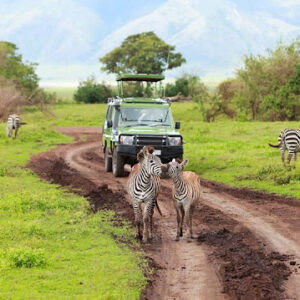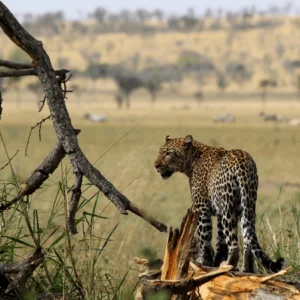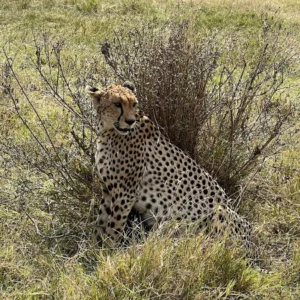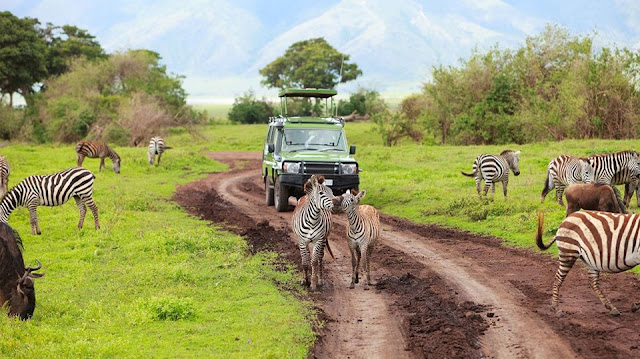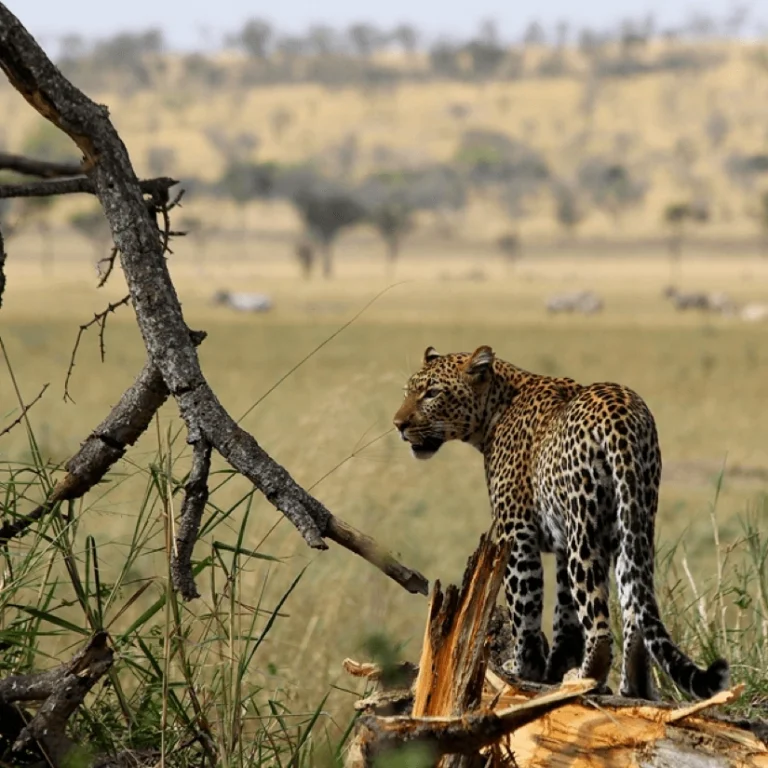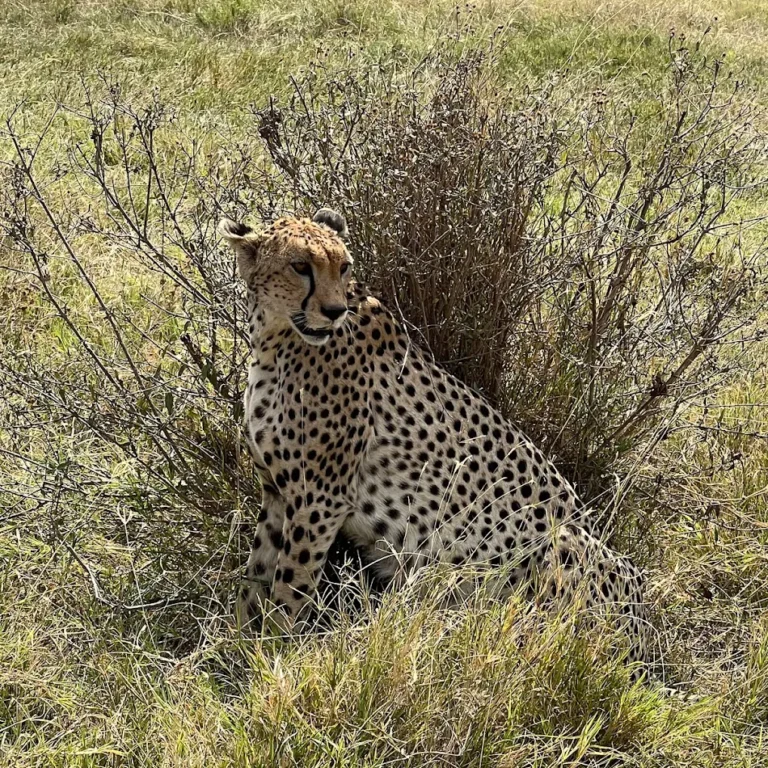Tanzania is renowned for its stunning landscapes and rich biodiversity, making it a top destination for wildlife enthusiasts. Among its many treasures, the African Big Five—lion, leopard, elephant, buffalo, and rhinoceros—embody the essence of the continent’s wildlife. Each species represents a unique aspect of Africa’s beauty and majesty. If you’re dreaming of spotting these magnificent creatures, here’s a guide to where you can find them in Tanzania’s most iconic national parks and conservation areas.
The term “Big Five” carries an almost mythical weight in the world of African safaris. Originally coined by big-game hunters to denote the five most dangerous animals to hunt on foot, today it represents the ultimate photographic prize for wildlife enthusiasts: the Lion, Leopard, African Elephant, Black Rhinoceros, and African Buffalo. To spot all five on a single safari is a testament to patience, luck, and the expertise of your guide.
Tanzania, a land synonymous with unparalleled wildlife and vast, protected wildernesses, stands as one of the world’s premier destinations for embarking on this iconic quest. Its diverse national parks offer exceptional opportunities to witness these magnificent creatures thriving in their natural habitats. Let’s delve into where you can find each of the African Big Five in Tanzania.
1. Serengeti National Park
Serengeti National Park is perhaps the most famous wildlife destination in Tanzania and is synonymous with rich wildlife encounters African big five and where to find them in Tanzania. Spanning 14,763 square kilometers, this vast savannah is home to all five members of the Big Five. The park’s endless plains provide ample opportunity for safari-goers to catch sight of lions lounging in the grasslands and leopards resting in acacia trees. The annual wildebeest migration also adds excitement, attracting predators that hunt along the herds. For the best viewing, consider visiting during the dry season (from June to October), when animals congregate around water sources.
Lions. The Serengeti boasts Africa’s largest lion population, making sightings almost guaranteed African Big Five, and where to find them in Tanzania. Prides are frequently seen resting on kopjes (rock outcrops) or stalking prey across the plains. Leopards. While elusive, the Serengeti offers excellent opportunities for leopard sightings, particularly in the riverine areas (like the Seronera Valley) where they find cover in trees. African Elephants. Abundant throughout the park, often seen in large herds, especially near water sources. Black Rhinoceros. Present but extremely rare. Conservation efforts are ongoing, and a sighting here is a true stroke of luck. African Buffalo. Common and widespread, often seen in large herds across the plains.
2. Ngorongoro Conservation Area
The Ngorongoro Conservation Area, a UNESCO World Heritage site, boasts an impressive biodiverse ecosystem within a massive volcanic caldera. This unique setting is ideal for spotting the Big Five, particularly the African rhinoceros big five and where to find them in Tanzania, which are more easily seen in this protected area. The conservation area also offers breathtaking views and an impressive variety of habitats. Visitors can expect to see elephants wandering among the acacia woodlands and buffalo grazing in the grasslands. Early morning safaris often yield rewarding sightings.
Lions. A healthy and easily observable population of lions thrives on the crater floor. Leopards. Present but still elusive, often found in the forested areas or along the crater rim. African Elephants. The crater is home primarily to magnificent bull elephants, which prefer the rich vegetation and permanent water sources. Black Rhinoceros. The Ngorongoro Crater holds one of Tanzania’s most stable and protected black rhino populations, offering the best chance for a sighting. African Buffalo. Abundant and easily seen in large herds grazing the crater floor.
3. Tarangire National Park
Tarangire National Park is less crowded than some of Tanzania’s more famous parks, yet it is a hidden gem for wildlife enthusiasts. Known for its large elephant populations, the park also supports a healthy population of lions and leopards African Big Five, and where to find them in Tanzania. The Tarangire River is a crucial water source, attracting animals year-round, making sightings plentiful. To make the most of your visit, aim for early morning or late afternoon drives. With its ancient baobab trees and diverse wildlife, Tarangire offers a quintessential African safari experience. It’s an excellent park for a deep dive into elephant and buffalo behavior.
Lions. Healthy lion prides are present, often seen resting in trees or near water sources. Leopards the African big five and where to find them in Tanzania. Present but relatively rare and challenging to spot. African Elephants. Tarangire boasts the highest concentration of elephants in Tanzania, especially during the dry season, making sightings almost guaranteed and spectacular. Black Rhinoceros. Absent from Tarangire. African Buffalo. Large herds are common, particularly near the Tarangire River.
4. Nyerere National Park (formerly Selous)
Nyerere National Park is Africa’s largest protected wetland, offering a stunning array of wildlife, including all members of the Big Five. This remote and less-traveled park provides an authentic safari experience, often with fewer crowds. The park’s rivers and lakes attract elephants and buffalo African big five, and where to find them in Tanzania, while leopards can often be spotted in the trees. Boat safaris on the Rufiji River provide a unique perspective and are a great way to see hippos and crocodiles, as well as elephants and buffalo along the banks.
Lions. Good populations, often seen on game drives. Leopards. Present, and sightings are possible, especially in areas with good cover. African Elephants. Nyerere has a very large elephant population, offering excellent sightings. Black Rhinoceros. Extremely rare; sightings are highly improbable. African Buffalo. Massive herds are a common sight, particularly near water.
5. Ruaha National Park
Ruaha National Park is a hidden treasure in Tanzania and one of the finest parks for spotting the Big Five. Its rugged landscapes and diverse ecosystems create a habitat for a multitude of animals during the dry season. Visitors can expect up-close encounters with lions and elephants, as the park is known for its large pride of lions and significant elephant population. The best time to visit is from June to October, when wildlife congregates near water sources.
Lions. Ruaha boasts one of the largest concentrations of lions in East Africa, including some prides known for tree-climbing. Leopards. Good leopard sightings are possible, especially along the Ruaha River. African Elephants. Enormous elephant herds are a highlight, often seen near the river. Black Rhinoceros. Extremely rare; sightings are highly improbable. African Buffalo. Large herds are common and easily spotted.
6. Lake Manyara National Park
Although smaller than some of Tanzania’s other parks, Lake Manyara National Park is famous for its diverse ecosystems and unique wildlife experiences. Visitors often encounter elephants, tree-climbing lions, and a variety of bird species, including flamingos and pelicans. The park’s lush landscapes and proximity to the rift valley offer a stunning backdrop for wildlife viewing. Early morning and late afternoon are the best times for sightings, as animals are most active during these cooler parts of the day.
Lions. Famous for its elusive tree-climbing lions, though sightings of this behavior are rare. Ground sightings are more common. Leopards. Present but very shy and difficult to spot. African Elephants. Healthy populations, often seen in the groundwater forests and open woodlands. Black Rhinoceros. Absent from Lake Manyara. African Buffalo. Common and easily seen.
Tips for Big Five Sightings
To maximize your chances of spotting the “Big Five” (lion, leopard, elephant, rhino, and buffalo) in Tanzania, focus on booking with an experienced operator, visiting during the dry season (June to October), and spending time in multiple parks. Early morning and late afternoon game drives offer the best opportunities, and patience is key. When planning your safari, keep in mind a few tips for maximizing your Big Five sightings:
Dry Season (June to October). The dry months are ideal for wildlife viewing, as animals congregate around waterholes, making them easier to find. Consider a Professional Guide. Hiring a knowledgeable guide can greatly enhance your experience, as they can lead you to the best viewing spots and provide valuable insights about the wildlife and ecosystems. Visit multiple parks. Combining different parks like Serengeti, Ngorongoro, and Tarangire increases your chances of seeing all the Big Five. Early Morning and Late Afternoon. These are the prime times for game drives. Most predators are active during the cooler parts of the day, hunting at dawn or dusk. Herbivores are also more active, grazing before the midday heat.
With its unparalleled landscapes and rich wildlife, Tanzania is undoubtedly a prime location for experiencing the African Big Five. Whether you’re wandering the plains of the Serengeti or exploring the unique ecosystems of Ruaha, each park offers its own unique slant on the enchanting spectacle that is Tanzania’s wildlife.
Conclusion: The Thrill of the Quest
A safari in Tanzania to spot the African Big Five is an adventure of a lifetime. It’s a journey that combines the thrill of the chase with the profound beauty of witnessing these magnificent creatures in their natural, wild environments. By choosing the right parks and leveraging the expertise of your guides, you’ll embark on a quest that promises not just incredible sightings but a deep and lasting connection with the heart of Africa.

